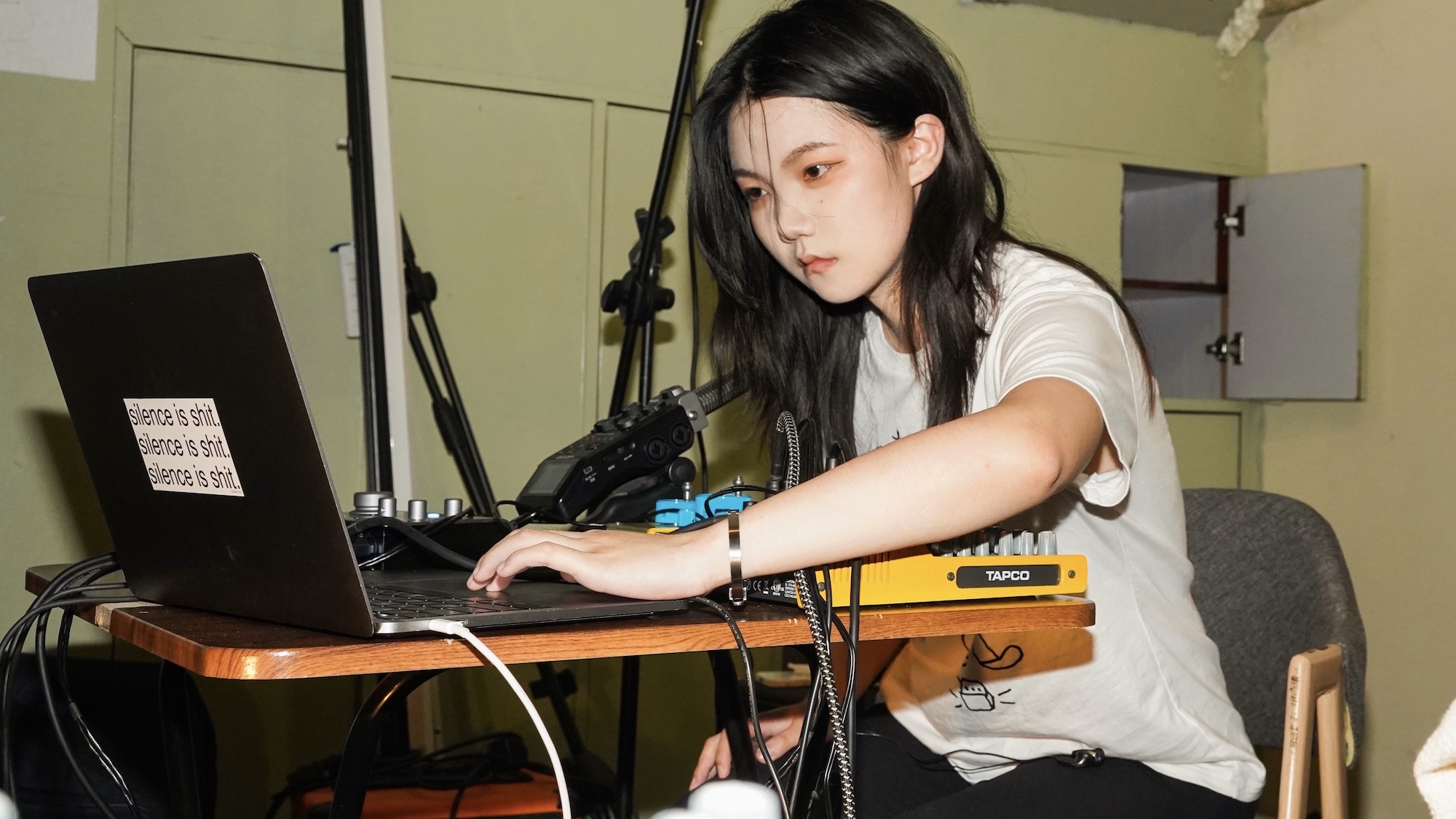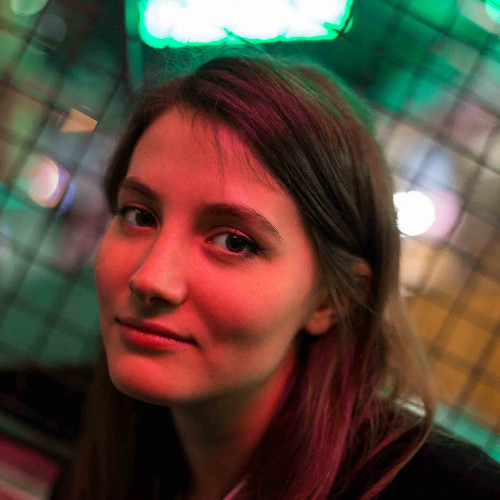Bela Summer Internship
Interview with Hao Zheng about Noise, Modular Synthesis and RNBO
Hao Zheng joined us at Bela last summer for an internship as part of her studies on the EMCT programme at Goldsmiths, University of London. In this blog we’ll find out about Hao’s background, a bit about the EMCT pathway, and we’ll have a look her internship project on integrating our Pepper module with Cycling 74’s RNBO.
Hello Hao! To begin with can you tell us a bit about your background?
Hello there! Yes, before starting my studies at Goldsmiths I was studying Fine Art and was playing bass in a band. At the same time, I was interested in Japanese noise (C.C.C.C, The Gerogerigegege) and electronic music (Yasuaki Shimizu, Haruomi Hosono). During the pandemic I started getting tired with my ongoing projects, I made the decision to change my trajectory and applied for the electronic music course.
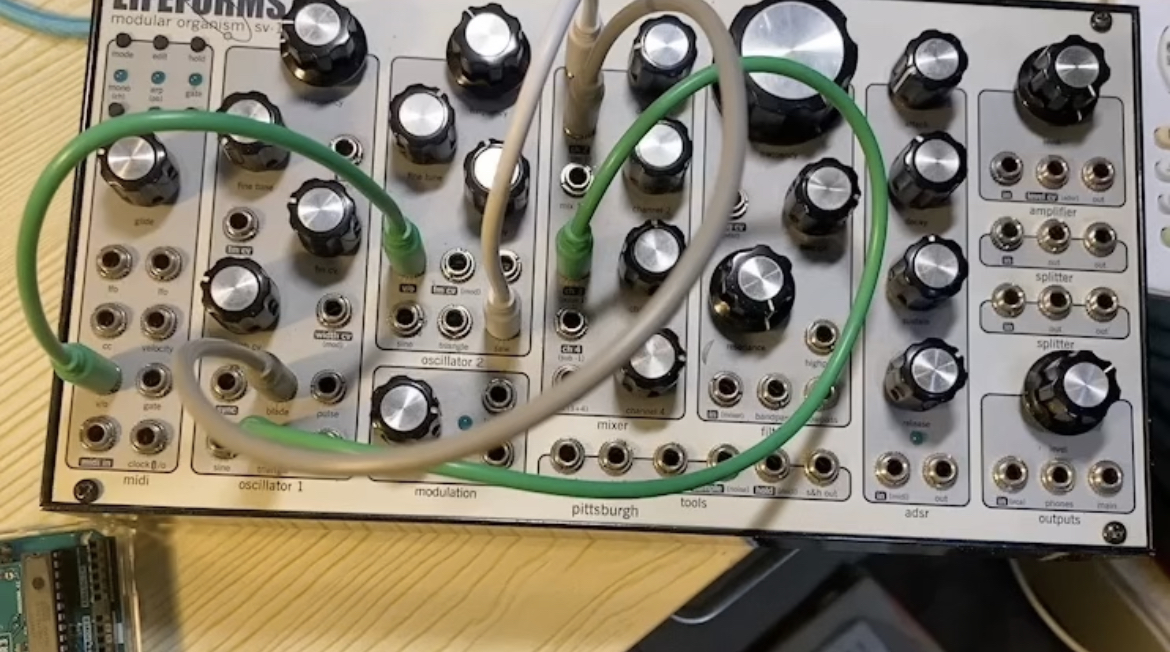
Lifeforms SV-1 semi-modular synthesizer by Pittsburgh Modular
My first machine was the Lifeforms SV-1 semi-modular synthesizer by Pittsburgh Modular, which I found incredibly fun to play with. Later, by chance, I got into no-input mixing boards, which kicked off a long exploration into the world of experimental and improvisational music! Before I left for Goldsmiths, I had the opportunity to do a few live shows in Shanghai and Wuhan. These experiences brought me one step closer to electronic improvisation and deepened my interest in the field.
You are currently studying on the EMCT bachelor’s programme. Can you give us a bit of insight into what you study there at Goldmsiths?
During our three-year program at Goldsmiths, our primary focus was around Max/MSP, taking a winding journey from basic synthesis studies to compositional techniques like serialism and stochastic processes, to complex audio-visual computing. The course was structured into two distinct pathways: BSc and BMus. The first year provided a comprehensive foundation, including fundamental programming, mathematics, as well as the exploration of the history of electronic music and critical analysis of contemporary music.
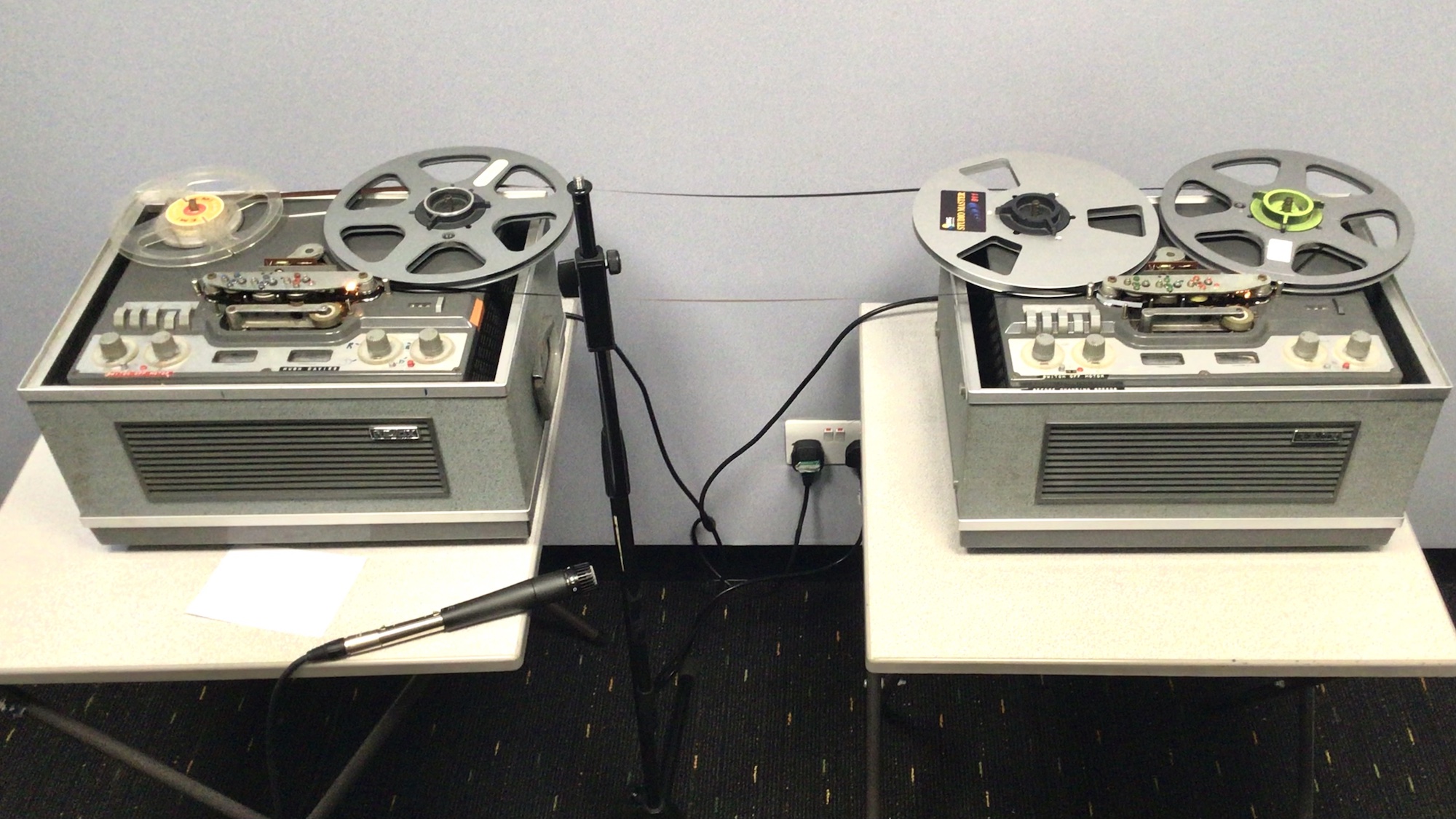
Tape machines Revox G36/Revox 736, part of the Goldsmiths Electronic Music Studio.
In the second year, students are given the flexibility to choose their pathway, either BSc or BMus. The majority, including myself, did the balanced 50/50 approach. I selected courses in sound and signal processing, C++, and film scoring. However, some of my peers took paths such as Jazz and pop music production, allowing them to avoid the intense coding.
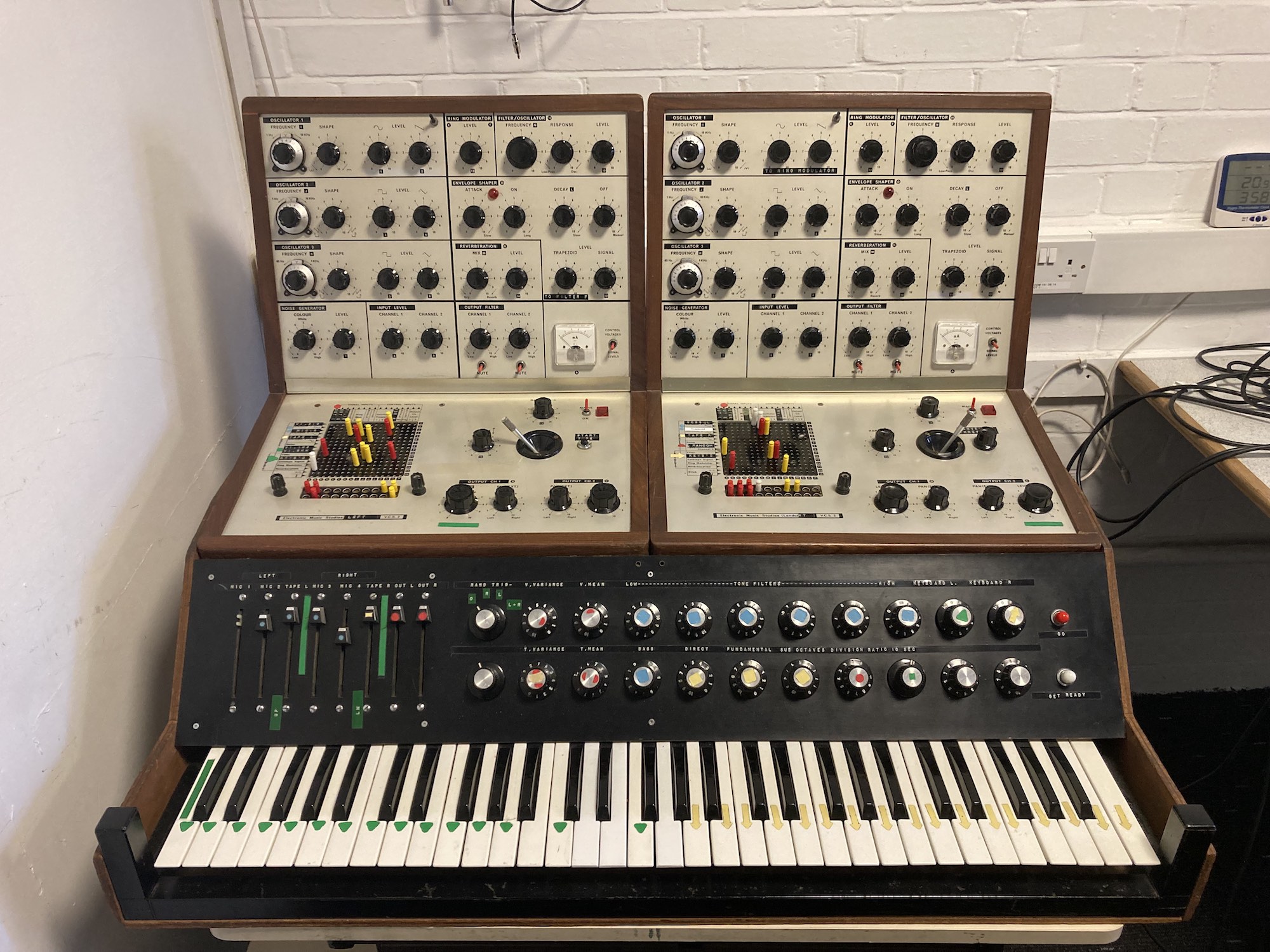
The unique EMS VCS4, part of the Goldsmiths Electronic Music Studio.
My personal highlights from the course was the opportunity to use the Electronic Music Studio. With guidance from the manager Marcus Leadley and technician Adam Barkley there, I got to use various machines and synthesisers. For instance, I used two vintage tape machines for one of my assignments, the Revox G36/Revox 736 from the early 60s. I also used the EMS VCS4 in one of my synth improvisation sessions, resulting in a powerful sonic experience! I even had the chance to master a DIY cassette in the control room, which made the work neat and tidy. The EMS studio provided me with a chance to further explore electronic music, and I found it to be one of the most valuable assets in my study.
You were brought up in Wuhan, China. What is the experimental Arts and electronic music scene like there?
The experimental music scene in Wuhan differs significantly from that in London. In Wuhan, there’s one of the most active communities known as Feichuan, which was founded by three artists and musicians during the pandemic and has been growing with the South China performance arts scene. In comparison to London, there’s a noticeable absence of older musicians or performers in Wuhan. At the same time, the lines between professional and unprofessional, serious and humorous, are often quite blurred which is nice. It’s an open and inclusive environment where anyone can take part, and people quickly become friends with one another. While it initially felt somewhat strange to me, once the performances began, I found it to be a uniquely enjoyable experience.
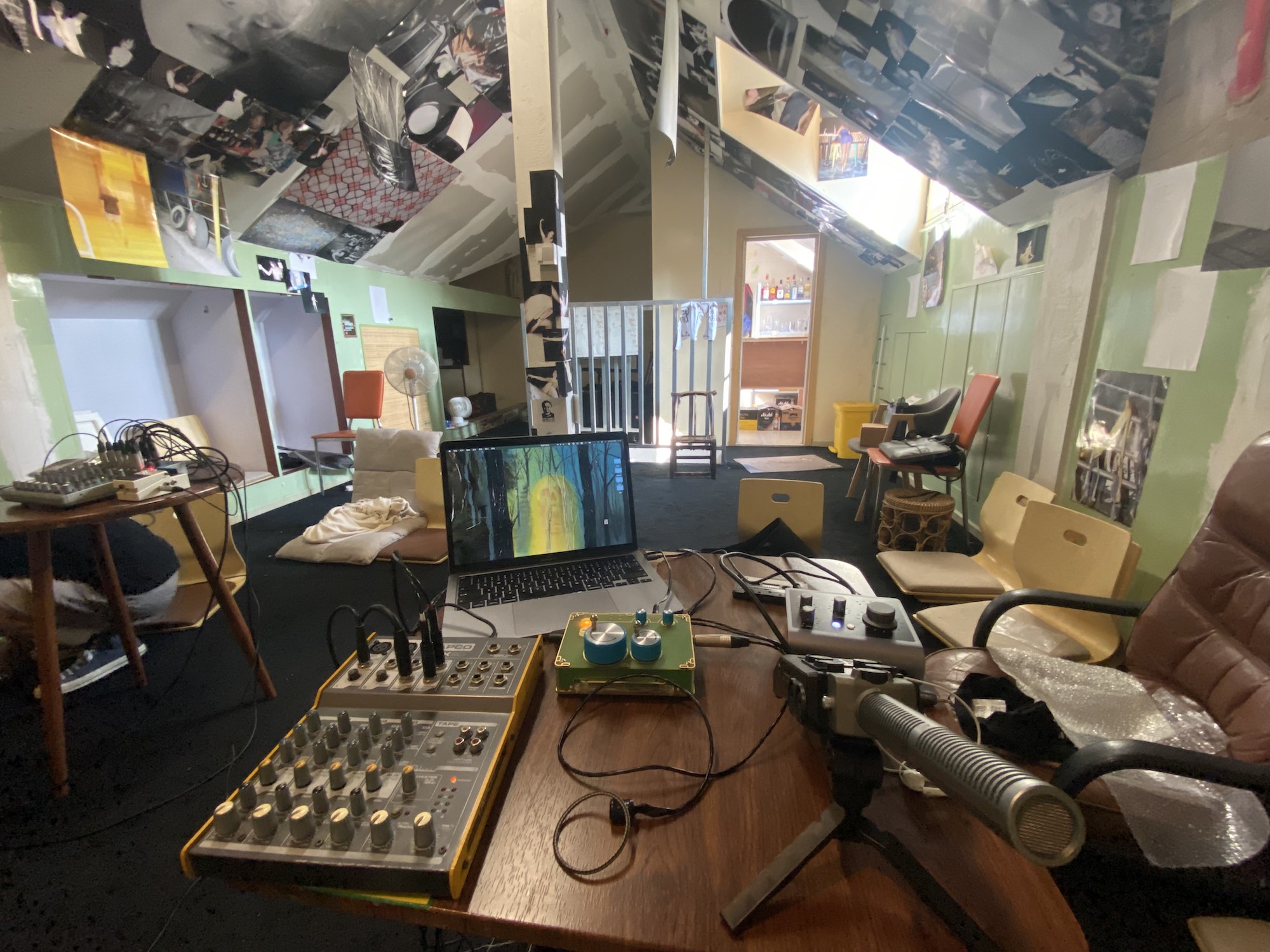
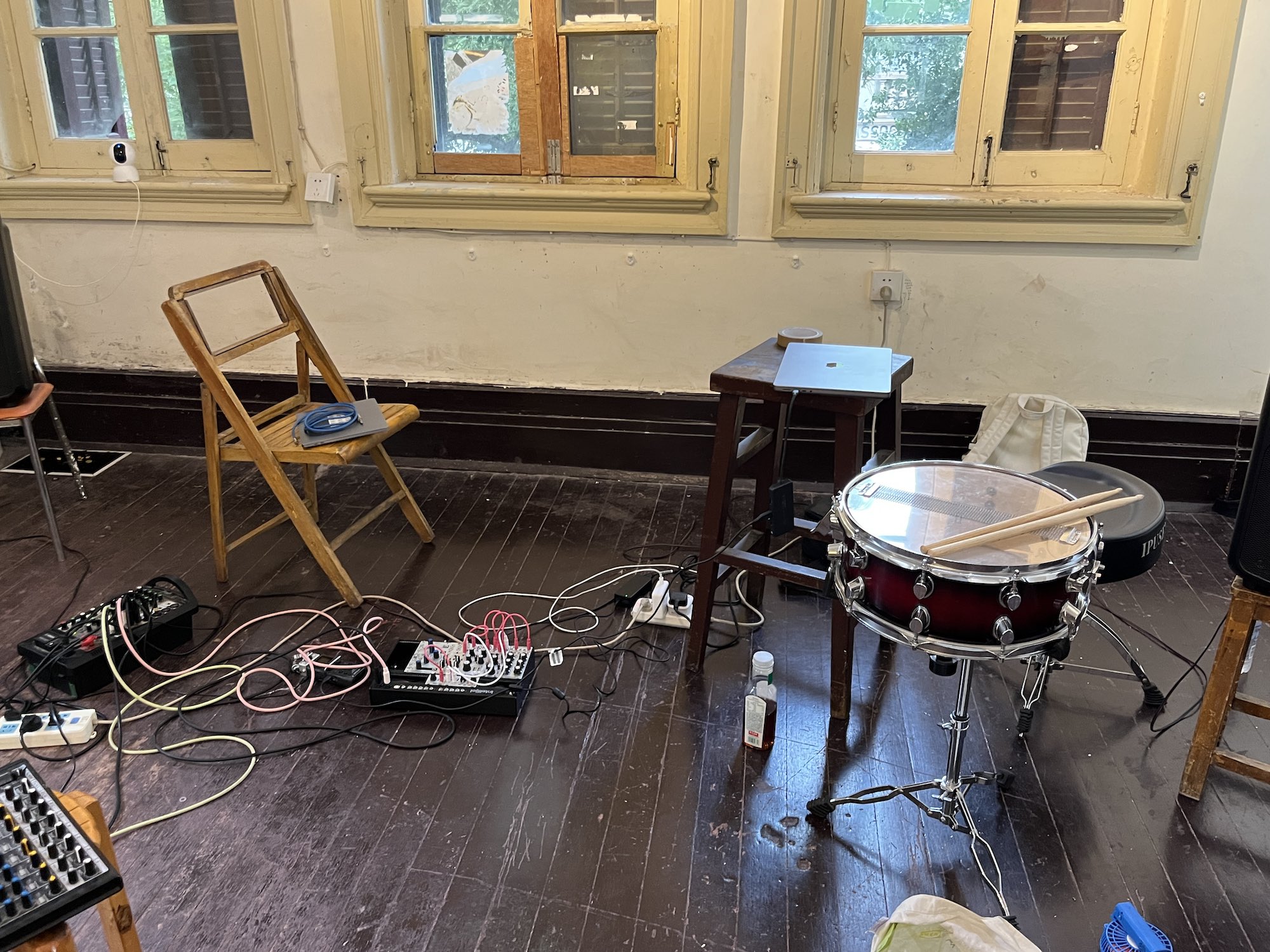
Arts space in Wuhan from the Feichuan community.
At Bela you have been working hard to improve the documentation for working with RNBO from Cycling 74.
That’s right. RNBO is a new tool from Cycling 74 which allows you to export your Max/MSP patches into various different formats and is particularly good for working with embedded platforms like Bela. During my internship I focused on making some simple building block synthesis and effects patches in RNBO which are designed to run on Pepper, but will equally work on one of the Bela systems. The first thing I did during the internship was help improve this guide on how to work with RNBO on Bela.
During the internship you created a series example patches for Pepper, our programmable Eurorack module. Let’s have a look at them.
Sure! I created 3 patches over the course of the internship which can be downloaded here. I hope these patches will help anyone interested in working with RNBO and Bela. These patches are designed as an introduction to RNBO and provide some simple building blocks of synthesis for working with Pepper and Bela.
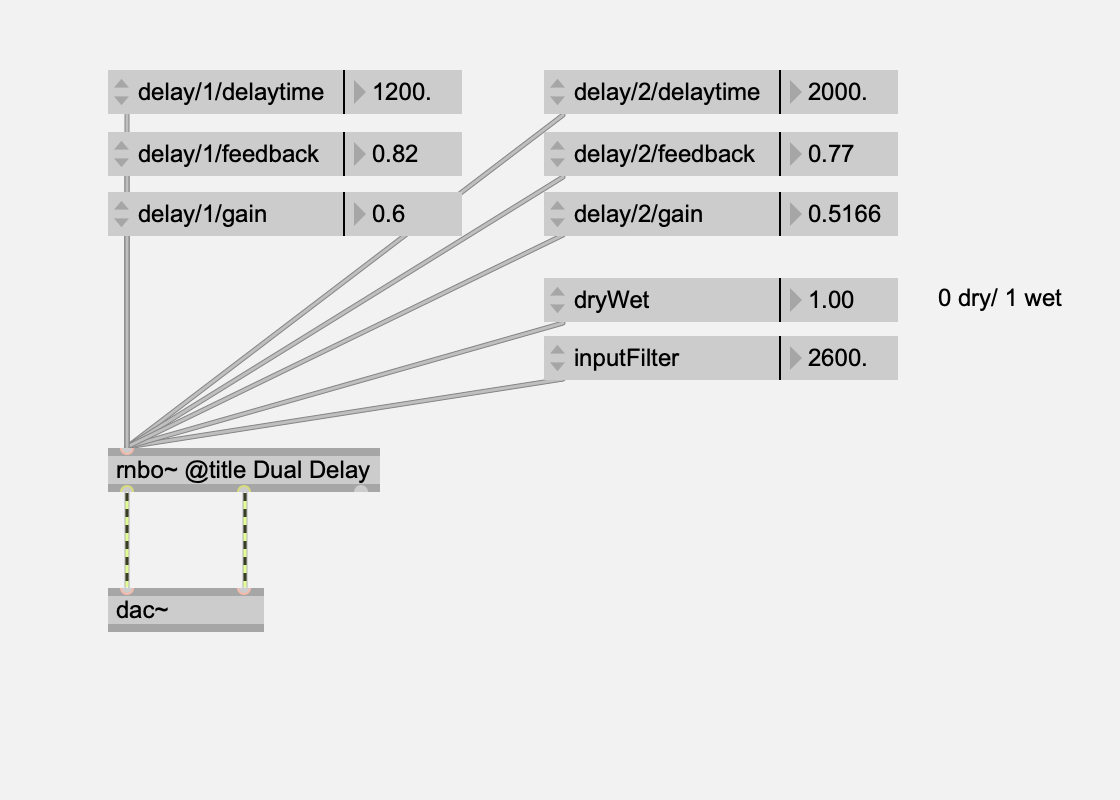
Getting Started:
This getting started patch maps all the available hardware on Pepper to some simple synthesis parameters. Details of the mapping are printed to the Bela console when the example is run. It has a simple sine oscillator with adjustable frequency and fine-tuning, suitable for drone and ambient settings. Button 1 lowers it by one octave, button 2 raises it by one octave, button 3 raises it by two octaves, and button 4 resets to the default. FM and AM modulation are possible for added sonic depth. By adjusting the AM frequency and FM depth, user can introduce more timbral variation. The CV outputs are each sending out ramp LFOs whose frequency is related to the master frequency. The LEDs flash sequentially.
Dual Delay:
This is a Dual Delay with a random parameter feature. The knobs control the delay parameters like delay time, feedback, and gain. There’s also a main Dry/Wet control that balances between the original input and delay effects. The input filter allows user to modify the input frequency threshold. Button 1 sets a preset value for all parameters, while button 2 generates random parameters.
Looper:
This is a basic Looper that could be used as a glitch rhythmic machine with three additional envelopes: Welch, Hamming and Hann. The three knobs simply control the volume, playback rate and the loop length. The LED bar graph shows the length of the loop selection. An LED bar graph visually displays the loop selection’s length. Press button 1 to start and stop recording, button 2 stops playback, button 3 starts playback and toggles the loop on/off, and button 4 selects the envelope functions.
Thanks Hao! To finish up can you tell us a bit more about your performance practice?
I currently use modular synthesis and electronic/electro-acoustic instruments, mainly in solo or small group improvisations. I’ve been doing a lot more live performances recently and I really enjoy it. I like being as focused as possible and listening intently, when you overthink you can miss opportunities to respond to the sound.
I think I prefer modular performance at the moment because it offers infinite possibilities and unique performance experiences. For me, it’s always slightly different or very different every time!

